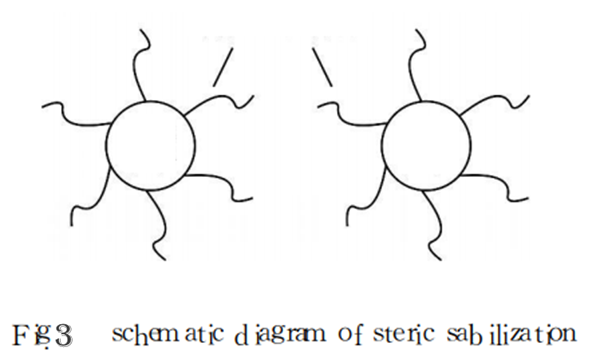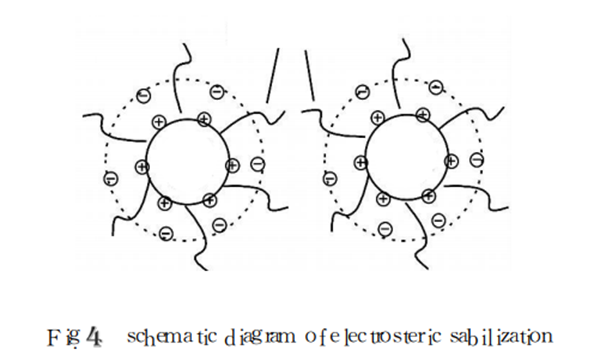- Home
- Products
- Elementary
- Boride Powder
- 3D Printing Powder
- Sulfide Powder
- Oxide Powder
- Carbide powder
- Nitride Powder
- Silicide Powder
- Hydride Powder
- Telluride Powder
- Selenide Powder
- Stearic Acid Series
- Phosphide Powder
- Nanoparticles
- Metal Alloy
- MAX Phase
- Lithium Battery Anode
- Surfactant
- Molecular sieves
- Concrete Admixtures
- News
- Answers
- Contact
- About
News
- 0
- 0
How to improve nanoparticles to make them more superior nanomaterials
If you are looking for high-quality products, please feel free to contact us and send an inquiry, email: brad@ihpa.net
Agglomeration of nanoparticles
The jumble of nanoparticles can be split right into two types: soft agglomeration and also hard cluster. Soft load is generally brought on by the electrostatic pressure in between particles as well as van der Waals force. Because of the weak force, soft heap can pass some chemical approaches.
The legislation or the application of mechanical energy to remove; the formation of tough load in enhancement to electrostatic pressures and van der Waals pressures, there are chemical bonds, so hard agglomerates are challenging to destroy, require to take some unique methods to control.
 < img src="// ueeshop.ly200-cdn. com/u _ file/UPAI/UPAI779
/ 1907/photo/1661a376e4. png"/ > Schematic layout of heap of nanoparticles Diffusion of nanoparticles Among the techniques to protect against the formation of high-density, hard-block precipitates of nanoparticles is to lower van der Waals attraction or communication between teams, so that the primary particles are not conveniently agglomerated to form additional particles, thus preventing additional inter-atomic bonding. This causes the formation of high-density, hard-blocked precipitates. The anti-agglomeration mechanism of nanoparticles is divided into: (1) electrostatic stablizing (DLVO theory); (2) steric stablizing; (3) electrostatic steric stabilization.
Nanoparticle diffusion theory Electrostatic stabilization system (DLVO concept)
The electrostatic stabilization system, also called the electric dual layer stabilization system, forms an electrical dual layer by adjusting the pH worth to generate a certain quantity of surface area fee externally of the fragment. The attraction between the bits is considerably minimized by the undesirable force in between the electrical dual layers, thus recognizing the dispersion of the nanoparticles. The mechanism is revealed as shown in Number 2.
< img src="// ueeshop.ly200-cdn. com/u _ file/UPAI/UPAI779
/ 1907/photo/1661a376e4. png"/ > Schematic layout of heap of nanoparticles Diffusion of nanoparticles Among the techniques to protect against the formation of high-density, hard-block precipitates of nanoparticles is to lower van der Waals attraction or communication between teams, so that the primary particles are not conveniently agglomerated to form additional particles, thus preventing additional inter-atomic bonding. This causes the formation of high-density, hard-blocked precipitates. The anti-agglomeration mechanism of nanoparticles is divided into: (1) electrostatic stablizing (DLVO theory); (2) steric stablizing; (3) electrostatic steric stabilization.
Nanoparticle diffusion theory Electrostatic stabilization system (DLVO concept)
The electrostatic stabilization system, also called the electric dual layer stabilization system, forms an electrical dual layer by adjusting the pH worth to generate a certain quantity of surface area fee externally of the fragment. The attraction between the bits is considerably minimized by the undesirable force in between the electrical dual layers, thus recognizing the dispersion of the nanoparticles. The mechanism is revealed as shown in Number 2.

- < img src="// ueeshop.ly200-cdn. com/u _ file/UPAI/UPAI779/ 1907/photo/38c1a5ba33. png"/ > Stochastic stablizing device The steric stablizing system is to add a certain quantity of uncharged polymer compound to the suspension to adsorb it around the nanoparticles to create a microcell state, which causes repulsion in between the fragments, consequently attaining the objective of dispersion. The mechanism representation is received Figure 4.
- Electrostatic steric stabilization system
The pH value of the polyelectrolyte makes the most of the dissociation level of the polyelectrolyte, to make sure that the polyelectrolyte externally of the fragment reaches the saturated adsorption, as well as both with each other work to uniformly distribute the nanoparticles. The device layout is displayed in Figure 3.
 < img src="// ueeshop.ly200-cdn.
com/u _ file/UPAI/UPAI779/ 1907/photo/ed7d9c96f4. png"/ > Nanoparticle dispersion method The dispersion of nanoparticles in the tool is usually divided right into 3 phases: 1 liquid wetting the strong fragments; 2 spreading the bigger aggregates into smaller fragments by outside force; 3 maintaining the dispersed particles, guaranteeing that the powder bits remain in the liquid The phase remains evenly distributed for an extended period of time to stop the spread particles from re-aggregating. According to different diffusion systems, it can be divided into mechanical action technique and also surface modification approach.
< img src="// ueeshop.ly200-cdn.
com/u _ file/UPAI/UPAI779/ 1907/photo/ed7d9c96f4. png"/ > Nanoparticle dispersion method The dispersion of nanoparticles in the tool is usually divided right into 3 phases: 1 liquid wetting the strong fragments; 2 spreading the bigger aggregates into smaller fragments by outside force; 3 maintaining the dispersed particles, guaranteeing that the powder bits remain in the liquid The phase remains evenly distributed for an extended period of time to stop the spread particles from re-aggregating. According to different diffusion systems, it can be divided into mechanical action technique and also surface modification approach.
- Mechanical activity
- Surface area adjustment
- Surface area alteration of nanoparticles by not natural substances
- Surface area alteration of nanoparticles by natural issue
 < img src ="// ueeshop.ly200-cdn.
com/u _ file/UPAI/UPAI779/ 1907/photo/c845513ec8. png"/ > final thought The surface area adjustment technology of nanoparticles is a side self-control carefully pertaining to numerous various other self-controls, including colloidal chemistry, organic chemistry, crystallography, nanomaterials, contemporary instrument evaluation as well as testing. The surface finishing modification innovation has actually been extensively used in the surface area alteration of nanometers, and also the research leads to this location additionally show that the surface covering innovation has a good advancement prospect. However, the alteration mechanism, alteration approach and also tools, as well as the modification impact characterization are still not ideal. Lot of times, the trouble can not be addressed essentially, as well as further research is urgently required. As a result of the substantial changes in the physical and also chemical properties of the surface-treated particles, the advancement of nano surface adjustment modern technology is considered a vital ways of generating new materials in the future. With the continuous research and also understanding of nano-particles, and also additionally exploration of the surface modification of nano-powders, nano-technology will certainly put in potential power in various fields and also will create a great culture. Benefits and also economic advantages.
< img src ="// ueeshop.ly200-cdn.
com/u _ file/UPAI/UPAI779/ 1907/photo/c845513ec8. png"/ > final thought The surface area adjustment technology of nanoparticles is a side self-control carefully pertaining to numerous various other self-controls, including colloidal chemistry, organic chemistry, crystallography, nanomaterials, contemporary instrument evaluation as well as testing. The surface finishing modification innovation has actually been extensively used in the surface area alteration of nanometers, and also the research leads to this location additionally show that the surface covering innovation has a good advancement prospect. However, the alteration mechanism, alteration approach and also tools, as well as the modification impact characterization are still not ideal. Lot of times, the trouble can not be addressed essentially, as well as further research is urgently required. As a result of the substantial changes in the physical and also chemical properties of the surface-treated particles, the advancement of nano surface adjustment modern technology is considered a vital ways of generating new materials in the future. With the continuous research and also understanding of nano-particles, and also additionally exploration of the surface modification of nano-powders, nano-technology will certainly put in potential power in various fields and also will create a great culture. Benefits and also economic advantages.
Luoyang Tech Co., Ltd is a specialist Zinc Nanoparticles maker with over 12 years experience in chemical items research and advancement. If you are looking for high top quality Zinc Nanoparticles, please really feel totally free to call us as well as send out a query.
Inquiry us
 < img src="// ueeshop.ly200-cdn.
com/u _ file/UPAI/UPAI779/ 1907/photo/ed7d9c96f4. png"/ > Nanoparticle dispersion method The dispersion of nanoparticles in the tool is usually divided right into 3 phases: 1 liquid wetting the strong fragments; 2 spreading the bigger aggregates into smaller fragments by outside force; 3 maintaining the dispersed particles, guaranteeing that the powder bits remain in the liquid The phase remains evenly distributed for an extended period of time to stop the spread particles from re-aggregating. According to different diffusion systems, it can be divided into mechanical action technique and also surface modification approach.
< img src="// ueeshop.ly200-cdn.
com/u _ file/UPAI/UPAI779/ 1907/photo/ed7d9c96f4. png"/ > Nanoparticle dispersion method The dispersion of nanoparticles in the tool is usually divided right into 3 phases: 1 liquid wetting the strong fragments; 2 spreading the bigger aggregates into smaller fragments by outside force; 3 maintaining the dispersed particles, guaranteeing that the powder bits remain in the liquid The phase remains evenly distributed for an extended period of time to stop the spread particles from re-aggregating. According to different diffusion systems, it can be divided into mechanical action technique and also surface modification approach.
 < img src ="// ueeshop.ly200-cdn.
com/u _ file/UPAI/UPAI779/ 1907/photo/c845513ec8. png"/ > final thought The surface area adjustment technology of nanoparticles is a side self-control carefully pertaining to numerous various other self-controls, including colloidal chemistry, organic chemistry, crystallography, nanomaterials, contemporary instrument evaluation as well as testing. The surface finishing modification innovation has actually been extensively used in the surface area alteration of nanometers, and also the research leads to this location additionally show that the surface covering innovation has a good advancement prospect. However, the alteration mechanism, alteration approach and also tools, as well as the modification impact characterization are still not ideal. Lot of times, the trouble can not be addressed essentially, as well as further research is urgently required. As a result of the substantial changes in the physical and also chemical properties of the surface-treated particles, the advancement of nano surface adjustment modern technology is considered a vital ways of generating new materials in the future. With the continuous research and also understanding of nano-particles, and also additionally exploration of the surface modification of nano-powders, nano-technology will certainly put in potential power in various fields and also will create a great culture. Benefits and also economic advantages.
< img src ="// ueeshop.ly200-cdn.
com/u _ file/UPAI/UPAI779/ 1907/photo/c845513ec8. png"/ > final thought The surface area adjustment technology of nanoparticles is a side self-control carefully pertaining to numerous various other self-controls, including colloidal chemistry, organic chemistry, crystallography, nanomaterials, contemporary instrument evaluation as well as testing. The surface finishing modification innovation has actually been extensively used in the surface area alteration of nanometers, and also the research leads to this location additionally show that the surface covering innovation has a good advancement prospect. However, the alteration mechanism, alteration approach and also tools, as well as the modification impact characterization are still not ideal. Lot of times, the trouble can not be addressed essentially, as well as further research is urgently required. As a result of the substantial changes in the physical and also chemical properties of the surface-treated particles, the advancement of nano surface adjustment modern technology is considered a vital ways of generating new materials in the future. With the continuous research and also understanding of nano-particles, and also additionally exploration of the surface modification of nano-powders, nano-technology will certainly put in potential power in various fields and also will create a great culture. Benefits and also economic advantages.